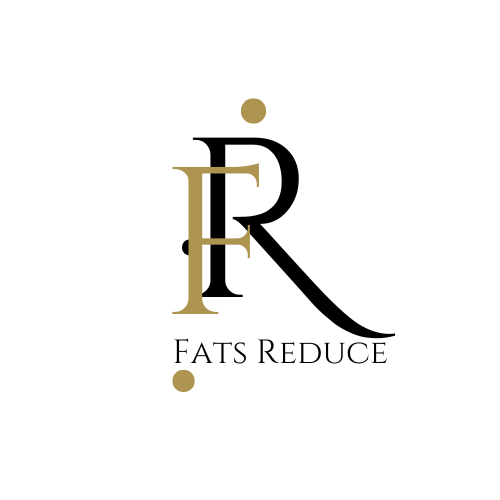Fad Diets: The Truth Behind Quick Fixes

Why do fad diets have such an irresistible allure? Promises of rapid weight loss, celebrity endorsements, and that enticing “quick fix” claim make them look appealing. But beneath the glossy exterior lies a series of drawbacks that hinder long-term weight management and jeopardize your health.
This blog post explores the science of fad diets and their risks through studies and expert evidence. You’ll also learn why sustainable, gradual changes create better results and how to identify red flags when evaluating weight-loss plans.
What Are Fad Diets?
Fad diets often tout themselves as revolutionary, offering rapid results in a short period. They frequently exclude entire food groups, overload certain nutrients (e.g., high-protein or no-carb diets), or require strict caloric restrictions.
Why They're Popular
Instant Gratification: Fad diets promise immediate results that match people’s desire for a fast solution.
Marketing Appeal: Their allure is amplified by clever branding, celebrity endorsements, and viral challenges.
Short-Term Results: Their designed rigidity often leads to quick weight loss—initially.
While these features attract millions worldwide, are the results sustainable, or do they come at a cost?
The Drawbacks of Fad Diets
The Yo-Yo Effect: Evidence from the International Journal of Obesity
Studies published in the International Journal of Obesity suggest that while fad diets may lead to rapid weight loss, participants often regain the weight (and sometimes even more) within months. This cycle—the “yo-yo effect”—results in metabolic and psychological stress. Repeated weight fluctuations can harm your metabolism, making future weight loss increasingly challenging.
Long-Term Effects: Insights from the American Journal of Clinical Nutrition

A comprehensive review in the American Journal of Clinical Nutrition compared the outcomes of fad diets to gradual, sustainable changes. Participants adopting slower, evidence-based approaches maintained long-term weight loss with tremendous success. The study highlights that artificially cutting calories or eliminating food groups leads to unsustainable eating patterns and eventual weight regain.
Nutritional Deficiencies and Health Risks

According to the National Institutes of Health (NIH), many fad diets eliminate essential nutrients. For instance:
Low-carbohydrate diets may lead to deficiencies in dietary fiber and essential vitamins.
Juice cleanses lack adequate fat and protein, depriving the body of long-term energy reserves.
Extremely low-calorie regimens can suppress metabolic rates and weaken the immune system.
This extreme restriction also increases susceptibility to conditions like osteoporosis, anemia, and other chronic problems.
Psychological Impact
Research from the Journal of the American Dietetic Association ties fad diets to mental health implications. The restrictive nature can foster feelings of guilt, failure, and unhealthy obsession with food. These patterns can escalate into disordered eating behaviors, harming your mental well-being and relationship with food.
The Science of Sustainable Weight Loss
While the promises of fad diets fade quickly, science advocates for slow, steady changes that yield long-lasting results. Here’s why:

Benefits of Gradual, Sustainable Changes
Promotes balanced nutritional intake, reducing deficiencies.
It helps maintain muscle mass while losing fat and improving overall physical health.
Long-term strategies encourage confidence and prevent the frustration of fluctuating weights.
Building Healthy Habits and a Balanced Diet
Experts recommend focusing on habits you can sustain rather than extreme measures. Incorporating whole foods, adequate hydration, and portion control forms the basis for a more balanced diet. Unlike fad diets, this approach fosters holistic wellness.
Incorporating Exercise for Long-Term Results
Regular physical activity complements gradual dietary changes. Cardio, strength training, and flexibility improve physical health while boosting mood and metabolism. A positive exercise routine creates a synergy with sustainable nutritional habits.
Case Studies and Success Stories
Real-Life Examples of Sustainable Weight Loss
Anna, a 38-year-old marketing professional, started her sustainable weight-loss journey by adopting a calorie deficit of only 200 calories per day and light exercise. Over two years, she steadily lost 25 pounds, maintained her energy levels, and grew in self-confidence.
Tim, a 45-year-old software engineer, previously experimented with keto and juice cleanses. After multiple failed attempts, he transitioned to a balanced Mediterranean diet and walked 10,000 steps daily. The result? He shed 15 pounds in one year and maintained his health improvements
Fad Diet Comparison
Contrast this with fad diets—quick results often tempt participants like Anna and Tim, but they usually result in temporary successes followed by weight regain.
How to Spot Fad Diets
To protect yourself from misleading promises, here are key signs to identify fad diets:
Common Characteristics of Fad Diets
Exclude entire food groups (e.g., no carbs or fats).
Claim to provide “miraculous” results within a very short time.
Recommend overly restrictive calorie counts or unusual food combinations.
Lack of sufficient scientific backing.
Red Flags to Watch Out For
Promises of “detoxification” (the body naturally detoxifies through its liver and kidneys).
Endorsements by celebrities rather than certified professionals.
Expensive supplements or unnecessary meal replacements.
